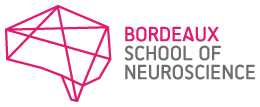Imagine that your goal is to discover how a brain works. One of the key aspects for achieving this is to understand how neurons and brain areas are interconnected, both at the structural and functional level. This knowledge requires the application of a diverse range of approaches, and the skill-set to understand how these approaches could be implemented. The Cajal course on Connectomics is an intensive three-week course that guides participants through the theory and practice of state-of-the art methods to address pertinent questions in the field of structural/functional connectomics — from mice to humans. This goal will be achieved through a unique balance of lectures from worldwide experts in their respective fields and experimental demonstrations and hands-on laboratory work (mini-projects) in small groups. These mini-projects encompass a diversity of techniques, ranging from EM- and super-resolution approaches to electrophysiological, calcium imaging, and optogenetic connectivity approaches in the behaving mouse, and from viral mono-trans-synaptic tracing and whole brain clearing and imaging methods to neuroimaging approaches using magnetic resonance imaging (functional and structural imaging) in both mice and human subjects (performed on the participants), as well as tractography of human postmortem tissue.
Participants will attend a lecture series featuring keynote speakers and interactive talks by experts in their fields regarding the specific techniques developed during the practical sessions. The rest of the time will be dedicated to mini-projects. These are divided into two themes (mice and humans), and each student will choose one mini-project from each theme. At the end of each block, students will present their results and experience from these projects. In addition, students will have the possibility to present their projects in their home-laboratories, as well as for ample interaction with the course faculty and speakers.
Course director & co-directors
- Andreas Frick (Bordeaux Neurocampus, France)
- Laurent Petit (Bordeaux Neurocampus, France)
- Olaf Sporns (Indiana University, USA)
Sophie Achard (France)
Demian Battaglia (France)
Maxime Descoteaux (Canada)
Dirk Feldmeyer (Germany)
Frederic Gambino (France)
Benjamin Grewe (Switzerland)
Xavier Leinekugel (France)
Valentin Nagerl (France)
Michael Okun (UK)
Priya Rajasethupathy (USA)
Félix Renard (France)
Nicolas Renier (France)
Silvio Sarubbo (Italy)
Michel Thiebaut de Schotten (France)
- Graph analysis
- The virtual brain and its relationship with real connectomics
- Diffusion/tractography tools
- Viral tools to tag defined neuronal populations, mono-trans-synaptic tracing of connectivity
- In vivo neuronal population imaging during behavioural tasks using two-photon microscopy
- Neuronal population imaging using miniature fluorescent microscopes during behavioural tasks
- Multi-‐electrode recordings of neural population activity during behavioural tasks
- Super-resolution shadow imaging as a new tool to visualize
living brain structure - Multi-‐electrode recordings of neuronal population activity
during behavioural tasks - Optogenetic/pharmacogenetic approaches for probing the function of specific neuronal projections during behaviour
- Intrinsic connectivity
- Whole-brain clearing, imaging and quantification approaches to connectivity
- Post-mortem dissection
- Structural connectivity

Keynote speakers
Ed Bullmore (University of Cambridge, UK)
Julie Harris (Allen Institute for Brain Science, USA)
Kenneth Harris (University College London, UK)
Fritjof Helmchen (Brain Research Institute – UZH, Switzerland)
Moritz Helmstaedter (Max Planck Institute for Brain Research, Germany)
Troy Margrie (University College London, UK)
Bernard Mazoyer (Bordeaux University, France)
Thomas Mrsic-Flogel (University of Basel, Switzerland)
Gordon Shepherd (Northwestern University, USA)
Larry Swanson (University of Southern California, USA)
Nathalie Tzourio-Mazoyer (Bordeaux Neurocampus, France)
Karl Zilles (Jülich Research Centre, Germany)
